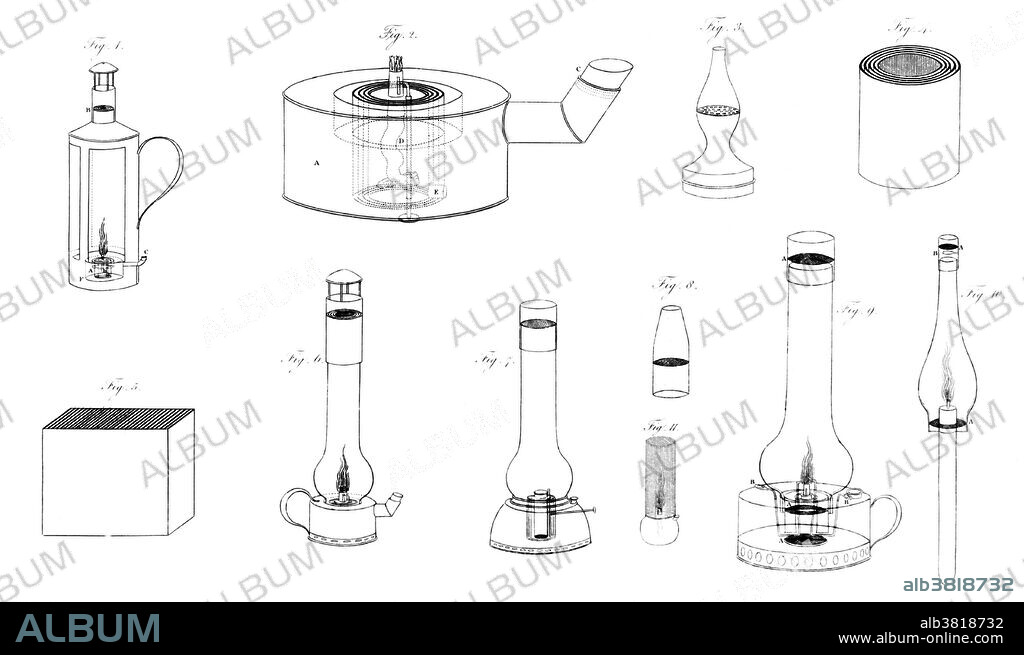alb3818732
Miner Safety Lamps Designed by Humphry Davy, 1816

|
Add to another lightbox |
|
Add to another lightbox |



Buy this image.
Select the use:

Title:
Miner Safety Lamps Designed by Humphry Davy, 1816
Caption:
The Davy lamp is a safety lamp for use in flammable atmospheres, invented in 1815 by Humphry Davy. It consists of a wick lamp with the flame enclosed inside a mesh screen. The lamp consists of a wick lamp with the flame enclosed inside a mesh screen. The screen acts as a flame arrestor; air can pass through the mesh freely enough to support combustion, but the holes are too fine to allow a flame to propagate through them and ignite any firedamp outside the mesh. It originally burned a heavy vegetable oil. The lamp also provided a test for the presence of gases. If flammable gas mixtures were present, the flame of the Davy lamp burned higher with a blue tinge. Lamps were equipped with a metal gauge to measure the height of the flame. Miners could place the safety lamp close to the ground to detect gases, such as carbon dioxide, that are denser than air and so could collect in depressions in the mine; if the mine air was oxygen-poor, the lamp flame would be extinguished.
Category:
ILLUSTRATION • Science: History
Credit:
Album / LOC/Science Source
Releases:
Image size:
4800 x 2820 px | 38.7 MB
Print size:
40.6 x 23.9 cm | 16.0 x 9.4 in (300 dpi)
Keywords:
1810S • 1816 • 19TH CENTURY • ART • ARTWORKK • CELEBRITIES • CELEBRITY • DAVY LAMP • DAVY MINER LAMP • DAVY MINER SAFETY LAMP • DAVY MINING LAMP • DAVY MINING SAFETY LAMP • DAVY • DIAGRAM • DRAWING • ENGLISH • EUROPEA • EUROPEAN • EUROPEANS • FAMOUS PEOPLE • FAMOUS • HISTORIC • HISTORICAL • HISTORY • HUMPHREY DAVY • HUMPHRY DAVY • ILLUSTRATION • ILLUSTRATIONS • ILUSTRATION • IMPORTANT • INVENTION • LAMP • MINER LAMP • MINING LAMP • NOTABLE WELL-KNOWN • SAFETY LAMP • SCIENCE • SCIENCE: HISTORY • TECHNOLOGICAL • TECHNOLOGY • WICK LAMP


 Pinterest
Pinterest Twitter
Twitter Facebook
Facebook Copy link
Copy link Email
Email
